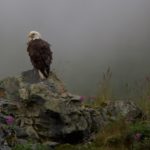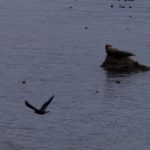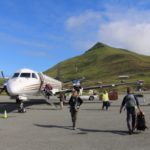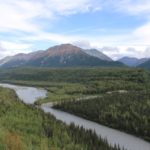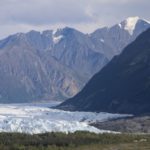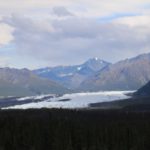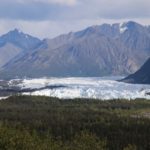6 August 2016.
The 6th of August was our last day in Unalaska. Jannice and I managed to resample one of the populations (UNA) to get the seed that was unripe when we saw it in the first day. It was a rush through the Overland Pass to Summer Bay in a cold and foggy morning. We found a few plants with seed and headed back to the hotel to check out and pick up Josh. The small plane at the airport arrived soon before our departure, exchanging passengers between Anchorage and Dutch Harbor.
At Anchorage we part ways. Jannice and Josh head back home, and I will stay a few more days to try sampling monkeyflowers in mainland Alaska. These populations will be useful as markers to compare against the monkeyflowers of the islands (Kodiak and the Aleutians) and Alaskan Peninsula. If our hunch is correct, the Scottish monkeyflowers should group closer to the Aleutian and Kodiak samples than to the ones I hope to find in mainland Alaska. But finding Mimulus in mainland Alaska is harder. They may not be as common as in the coast and islands further west.
After picking up a rental SUV I drive for a few hours east on the Glenn Highway. After passing the town of Palmer two mountain ranges rise up: the coastal mountains in the south and the interior mountains in the north. The road follows more or less the Matansuka River, and soon I read the glacier of the same name. The landscape is impressive. Unlike treeless Unalaska, the mountains here are forested. The glacier snakes down the valley reaching the river plain. Soon after a new range of mountains rises up in the north. These mountains are made of gypsum, coloured red in the evening light. The gypsum of these red mountains is witness of the volcanic activity that shapes Alaska. Around eight or nine in the evening I decided to stop and set camp. I find a campsite in Glenallen, a small roadside town that has few attractions except its beautiful surroundings. I fall asleep among the sound or rain and strong winds. For the next days, Alaska has decided to release some wet and rough weather to make the monkeyflower search more interesting.
